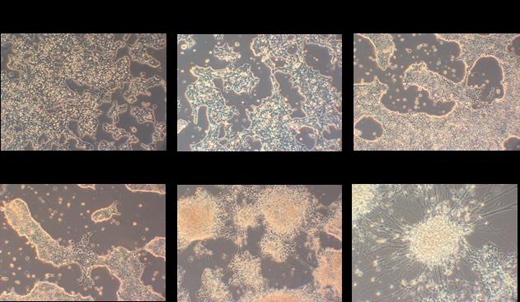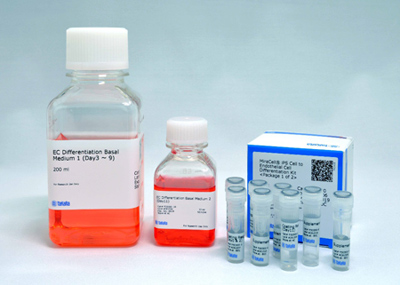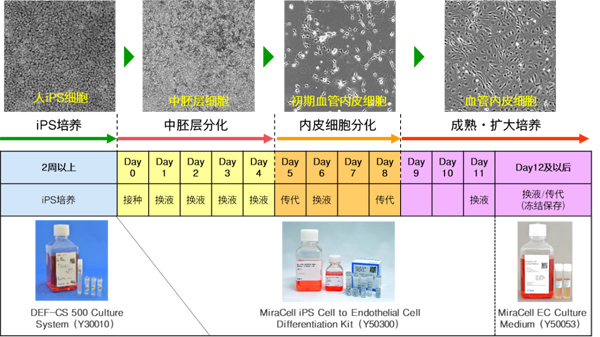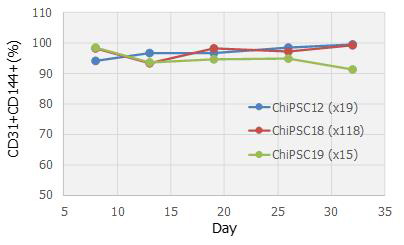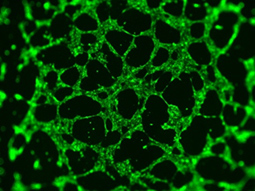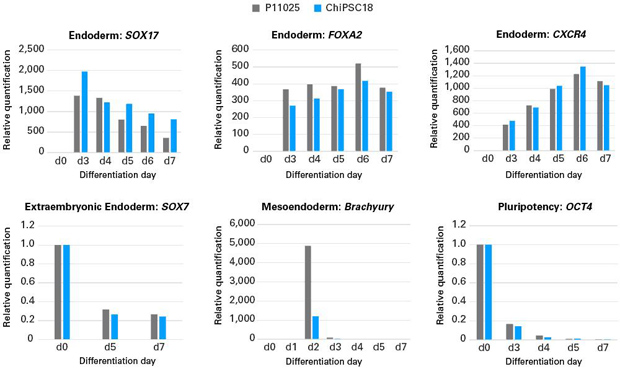上海金畔生物科技有限公司代理Takara酶试剂盒全线产品,欢迎访问官网了解更多产品信息。
| iPS Cell to Hepatocyte Differentiation System | ||||||
| 品牌 | Code No. | 产品名称 | 包装量 | 价格(元) | 说明书 | 数量 |
| Cellartis | Y30055 | Cellartis® iPS Cell to Hepatocyte Differentiation System | 1 Kit | ¥13,846 | |
  |
| Cellartis | Y30051 | Cellartis® Hepatocyte Maintenance Medium | 100 ml | ¥2,198 | |
  |
收藏产品 加入购物车
| iPS向肝脏细胞定向分化操作系统 (Cellartis iPS Cell to Hepatocyte Differentiation System) |
|||||||||||||||||
|
|||||||||||||||||
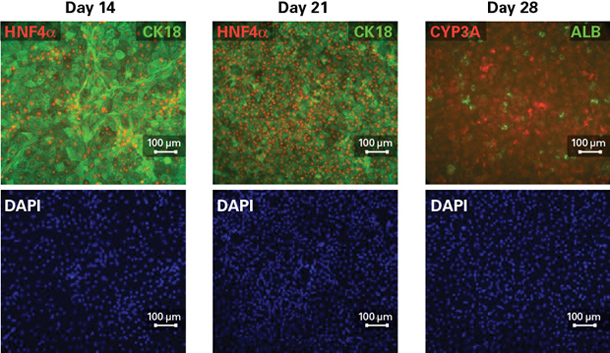 |
|||||||||||||||||
| Immunocytochemistry analysis of hepatocyte differentiation. hiPS cells were differentiated into functional hepatocytes using the Cellartis iPS Cell to Hepatocyte Differentiation System. Hepatocytes were immunostained to detect early hepatic markers HNF4α (red, nuclear) and CK18 (green) on days 14 and 21. As the hepatocytes matured, expression of liver-specific markers CYP3A (red, cytoplasmic) and Albumin (green) increased as seen on day 28, as expected. Cell nuclei were stained with DAPI (blue). | |||||||||||||||||
| 参考文献: | |||||||||||||||||
| Asplund, Annika, et al.One Standardized Differentiation Procedure Robustly Generates Homogenous Hepatocyte Cultures Displaying? Metabolic Diversity from a Large Panel of Human Pluripotent Stem Cells. Stem Cell Rev and Rep (2015). | |||||||||||||||||
| 用户分享: | |||||||||||||||||
| ◆ 东海大学医学部-纸谷聪英教授 利用人iPS细胞体外构建多囊性肝病(Polycystic liver disease)模型 |
|||||||||||||||||
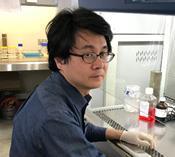 |
|||||||||||||||||
| 纸谷聪英教授使用Cellartis iPS Cell to Hepatocyte Differentiation System(Y30055)构建肝脏疾病模型的研究成果已刊登在Stem Cell Research。 【论文】 Akihide, K., Hiromi, C., Kinuyo, I., Emi, A., Kota, T., & Tatehiro, K., et al. (2018). An in vitro model of polycystic liver disease using genome-edited human inducible pluripotent stem cells. Stem Cell Research, 32, 17-24. |
|||||||||||||||||
| 实验数据 | |||||||||||||||||
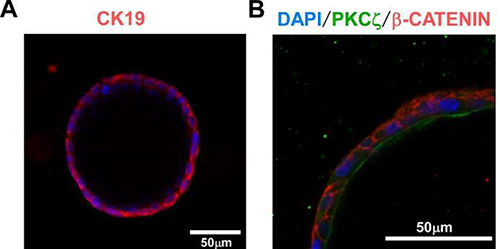 |
|||||||||||||||||
| 图:使用 Cellartis iPS Cell to Hepatocyte Differentiation System(Y30055)获得的人iPSC来源肝前体细胞(iPS-HPCs)诱导分化为胆管状Cyst结构。 |
|||||||||||||||||
| (引用自文献Akihide Kamiya et al., Stem Cell Research, 2018) | |||||||||||||||||
| 访谈时间: | |||||||||||||||||
| 1. 开始使用Cellartis iPS Cell to Hepatocyte Differentiation System(Y30055)的契机是什么? | |||||||||||||||||
| 很多研究组已经报道了多种从人iPS细胞诱导分化形成肝脏细胞的方法,我们研究组也在做相关工作。由于细胞分化不稳定,我担心使用饲养层细胞培养人iPS细胞会对肝脏分化产生影响,因此决定尝试使用Cellartis iPS细胞无饲养层培养系统Cellartis DEF-CS™ 500 Culture System(Y30010)和肝脏分化系统Cellartis iPS Cell to Hepatocyte Differentiation System(Y30055)。 | |||||||||||||||||
| 2.实际使用后感觉如何? | |||||||||||||||||
| 与之前使用的饲养层培养方法相比,Y30010能更简便高效的进行培养;使用Y30055进行的肝脏分化非常稳定,进一步提升了实验效率。 | |||||||||||||||||
| 3. 对暂未使用该制品的用户有什么寄语? | |||||||||||||||||
| 人iPS细胞向肝脏细胞分化过程中,细胞密度对分化效率有很大影响,进而影响实验结果。我认为Cellartis系统的优点主要在于各个实验阶段偏差小,结果稳定,适合追求实验效率的人。 | |||||||||||||||||
| ◆ 东京医科齿科大学-柿沼晴教授 先天性肝纤维化模型的开发和病理阐明的研究 |
|||||||||||||||||
 |
|||||||||||||||||
| 柿沼晴教授使用Cellartis iPS Cell to Hepatocyte Differentiation System(Y30055)构建肝脏疾病模型的研究成果已刊登在Journal of Hepatology。 | |||||||||||||||||
| 【论文】 | |||||||||||||||||
| Tsunoda, T., Kakinuma, S., Miyoshi, M., Kamiya, A., Kaneko, S., & Sato, A., et al. (2019). Loss of fibrocystin promotes interleukin-8-dependent proliferation and ctgf production of biliary epithelium. Journal of Hepatology. | |||||||||||||||||
| 访谈时间: | |||||||||||||||||
| 1.开始使用Cellartis iPS Cell to Hepatocyte Differentiation System(Y30055)的契机是什么? | |||||||||||||||||
| 一起进行研究的老师使用后能够进行稳定的培养,我们研究室也正好想利用无饲养层培养系统,所以开始使用了Cellartis DEF-CS™ 500 Culture System(Y30010)和肝脏分化系统Cellartis iPS Cell to Hepatocyte Differentiation System(Y30055)。 | |||||||||||||||||
| 2.实际使用后感觉如何? | |||||||||||||||||
| Y30010无饲养层培养系统使用比较简便,同时能够稳定的培养人iPS细胞。这次实验中,利用Y30055分化至肝前体细胞(iPS-HPCs),进一步诱导分化成了胆管细胞,我认为诱导分化的再现性好。不仅分化至成熟肝细胞谱系,同时相比于以往报道的方法,再现性更稳定。 | |||||||||||||||||
| 3. 对暂未使用该制品的用户有什么寄语? | |||||||||||||||||
| 在人iPS细胞的培养和分化至肝细胞谱系的诱导中,即使是对人iPS细胞使用经验尚浅的实验者,也能够进行培养并得到稳定的再现。 | |||||||||||||||||
页面更新:2020-01-16 16:00:18

